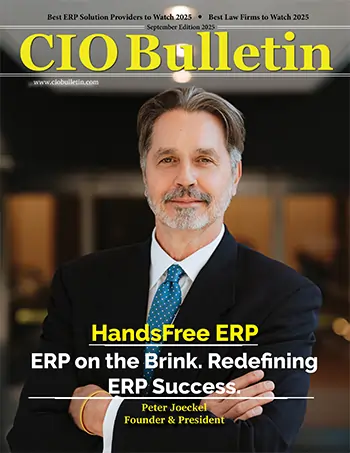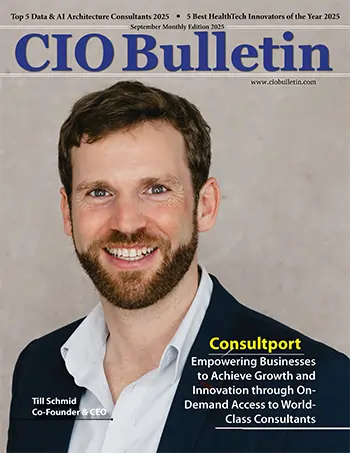50 Leading Companies to Watch 2022
Cio Bulletin

3D printing has changed the landscape of manufacturing. 3D printing is a more agile process than other fabrication methods — allowing manufacturers to go from design to complex metal parts faster, easier, and at lower costs.
Implementing metal 3D printing correctly can greatly improve business efficiency and agility — whether through eliminating the need for detail drawings and machine programming, or drastically shortening lead times that bog down product development processes.
Fabrisonic LLC provides 3D metal printing services in a wide range of metals through the patented Ultrasonic Additive Manufacturing (UAM) process. As a technology focused small business, Fabrisonic has the technical capability and agility needed for the emerging fast-paced manufacturing world. The commitment to quality is evidenced through several quality awards from industrial customers.
Fabrisonic was formed in 2011 to consolidate the intellectual property of EWI, an Ohio based 501c (3) research organization, and a Michigan based for profit company, Solidica. Fabrisonic controls nine patents covering all aspects of UAM. Fabrisonic’s first machine, the SonicLayer 7200 was built prior to 2011 through an Ohio Third Frontier technology development program. Following the success of its first machine, Fabrisonic developed and built a smaller, research-platform machine, the SonicLayer R200, and a mid-sized production model, the SonicLayer 4000. These machines help to shorten lead times for prototypes and production parts that the company makes for both commercial and government partners.
Fabrisonic 3D Printing
Innovative 3D metal printing service for aerospace metals, aluminum and copper with their low‐temperature Ultrasonic Additive Manufacturing (UAM) technology. This one-of-a-kind hybrid technology allows you to create structures impossible with traditional subtractive manufacturing alone – driving improvements in performance, quality and cost.
Innovative solid-state ultrasonic bonding of dissimilar metals
UAM relies on solid-state ultrasonic bonding with no change to metal microstructure. The bond permits joining of dissimilar metals without the metallurgical mismatch issues seen in other additive processes. A wide range of material combinations can be printed in a single part opening the design space to enable property gradients and engineered material.
Hybrid 3D printing with traditional CNC milling of complex structures
How do you create complex conformal 3D flow paths with CNC surface finish? The answer lies in combining 3D printing with traditional CNC milling, a hybrid approach. UAM allows designers to dream up interwoven 3D cooling channels not possible with traditional fabrication techniques. In addition, UAM 3D printing aluminum and copper heat exchangers helps to increase performance AND decrease weight.
Ultrasonic metal welding has been around since the 1950’s with modern applications in everyday welding of battery tabs, thin foil packaging, and even electronic wires. An ultrasonic weld operation begins by pressing a thin metal foil onto another metal component. While under a constant force, ultrasonic vibrations are applied to cause scrubbing of the mating faces. This shearing motion cleans off surface oxides through friction to then allow direct contact of pure metal on pure metal. The result is in a solid state atomic bond with minimal heating. The heat and plastic deformation promote diffusion and recrystallization at the interface resulting in a true metallurgical bond. Ultrasonic welding can be accomplished at very low temperature and without any special environments. For all metals, the bonding temperature is significantly below their respective melting temperature. The solid-state nature is a key advantage of ultrasonic welds as it:
UAM is ultrasonic welding on a semi-continuous basis where solid metal objects are built up to a net three-dimensional shape through a succession of welded metal tapes. Through periodic machining operations, detailed features are milled into the object until a final geometry is created by removing excess material. The figure at right shows a rolling ultrasonic welding system, consisting of two 20,000 hertz ultrasonic transducers and the welding sonotrode. High-frequency ultrasonic vibrations are locally applied to metal foils, held together under pressure, to create a weld. The vibrations of the transducer are transmitted to the disk-shaped welding sonotrode, which in turn creates an ultrasonic solid-state weld between the thin metal tape and the substrate. The continuous rolling of the sonotrode over the plate welds the entire tape to the plate.
Mark Norfolk, PE – President & CEO
With over twenty years experience in manufacturing, R&D, and shop floor management, Mr. Norfolk leads Fabrisonic in the commercialization of Ultrasonic Additive Manufacturing (UAM) Technology. Mr. Norfolk led EWI’s development and research into UAM for four years leading up to the inception of Fabrisonic and has been with the company ever since. Prior to joining EWI, Mr. Norfolk held numerous manufacturing and management positions at Deere & Company in Moline, Il. Mr. Norfolk holds an MBA from The University of Iowa and a Bachelors of Science in Welding Engineering from The Ohio State University.







